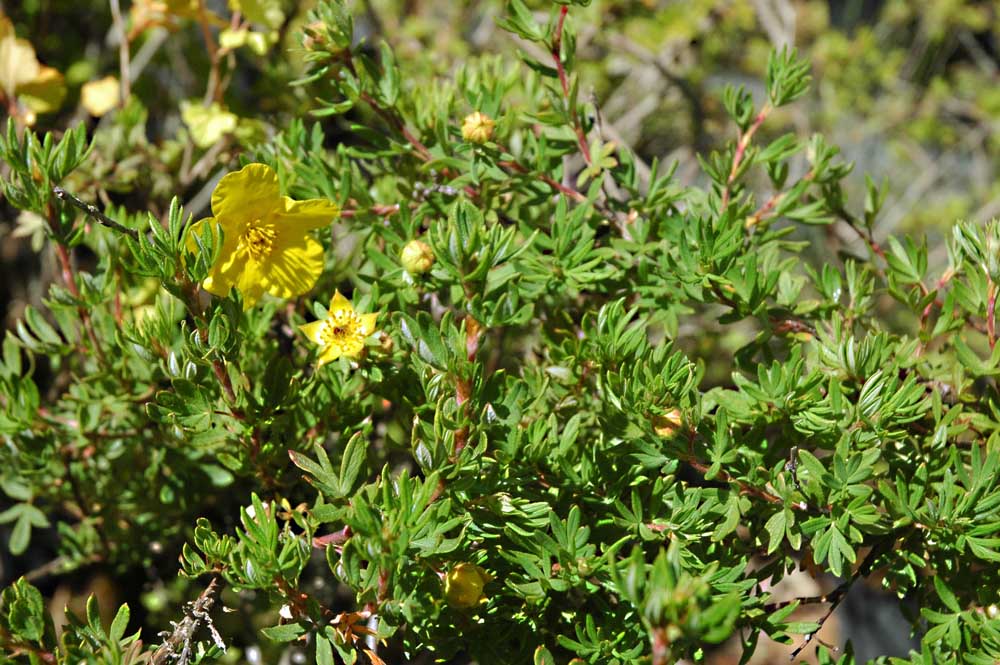Don’t feed the deer
Published 12:13 pm Tuesday, June 28, 2016

- Alder Slope Nursery owner Randy Slinker recommends this flowering shrub if you want a truly deer-resistant option. This is a Potentilla creeping shrub that blooms yellow all summer.
Deer and elk can eat up a landscaping project in minutes. It’s like you planted candy in your yard just for them. And you did. Where else are they going to find these tasty plants?
There are plenty of recommendations for deer repellent, from linen bags filled with human hair hanging from your trees to blood meal scattered on the ground. And these methods can be effective in the short term — until the deer get used to the smell.
Trending
Your best bet is a high fence — 8 feet high is recommended, with a top that slants outward at a 45-degree angle.
You know, like a prison fence. This may not be the look you were going for.
A lower fence and a yappy dog may fit your plans much better, but then there’s the noise complaint factor.
If you look around the county you will see many variations on the theme of tall fence, and some of them are surprisingly pleasing.
There also is the option of putting your tasty flowers in hanging pots and hanging them high on your porch. You’ll see a lot of this strategy in play in Wallowa County.
Other people just consider deer part of their scenery, take a philosophical view to their snacking and don’t mind replanting.
Trending
For those who want real outdoor landscaping without a prison fence there are some “deer-resistant” landscaping options.
The staff at our local Oregon State University Extension Service is wary of using the term “deer-proof,” and Randy Slinker of Alder Slope Nursery just laughed when asked about “deer-proof” plants.
That said, there are plants that deer generally do not bother, and some folks plant those at the edge of the property with their more tasty plants around the porch — hoping to limit deer foraging that way.
Here are a few hardy and pretty plants that deer do not seem to like. That’s no guarantee they won’t try them, but they probably won’t put them on their favorites list. And your farmer neighbor may be offering a better spread of alfalfa or grain.
Flowers deer don’t prefer include: Columbine (Aquilegia), Pinks (Dianthus), Bleeding Heart (Dicentra), Foxglove (Digitalis), Sunflower (Helianthus), Helibore (Helleborus), Iris and Tulip and Daffodil (Narcissus), and Lavender (Lavendula).
Good trees include: Japanese Flowering Cherry, Corkscrew Willow, Kousa Dogwood, English Hawthorn, Russian Olive, Holly, Juniper, Green or white Ash, Norway Maple, Silver Maple, Paper Birch, Norway Spruce, White Spruce and Canada Hemlock.
Effective ground cover includes: Carpet Bugle (Ajuga reptans), Lilly-of-the-Valley (Convallaria majalis) and Periwinkle (Vinca minor).
Pretty shrubs of various sizes include: Butterfly Bush, American Bittersweet, Red Osier Dogwood, Mountain Laurel, Beauty Bush, Rhododendron, Potentilla (cinquefoil), Oregon Grape and Lilac.
There are many species of Potentilla, by the way, so you do not have to end up with the one on the Wallowa County weed list.
These are just a few of the plants that might do well in your deer-pillaged landscape. A talk with your greenhouse representative or a search on the web will no doubt yield even more that will fit our growing region and your design scheme.
For a larger list visit http://tinyurl.com/h6mf8jc.









